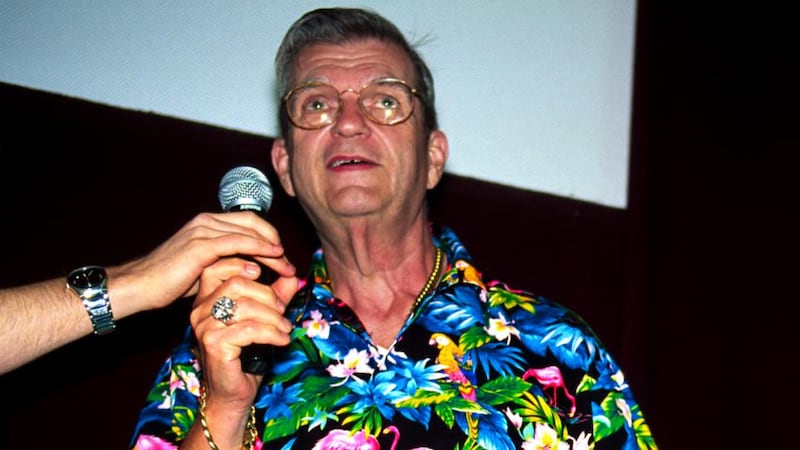Don Featherstone did not invent Phoenicopterus ruber: nature took care of that eons ago. But what Featherstone did nearly six decades ago – in the process indelibly altering the landscape of the mid-century US – was to cast the creature in plastic and attach slender, rod-like legs for planting it in the ground.
Featherstone, a sculptor who died on Monday at 79, was the inventor of the pink plastic flamingo, that flagrant totem of suburban satisfaction and, in later years, postmodern irony. He named it Phoenicopterus ruber plasticus.
Less hideous than a garden gnome, more politically correct than a lawn jockey, the plastic flamingo has been flaunted in front gardens by the millions; feted in films, on television and in song; and held up as an object of impassioned pride and equally impassioned prejudice.

Featherstone had not contemplated creating an enduring emblem of kitsch in 1957, when his first flamingo sailed off the assembly line, or the next year, when the bird was brought to market. A recent art-school graduate, he was simply heeding the career advice popularly given to young people of the day: plastics.
Featherstone was born on January 25th, 1936, in Worcester, Massachusetts. He graduated from the school of the Worcester Art Museum in 1957, and that year, to the chagrin of his professors and the gratification of his creditors, he took a job with Union Products, a maker of plastic lawn ornaments in Leominster, Massachusetts.
To sculpt his first assignment, a three-dimensional duck, Featherstone went out and bought a live one, keeping it tenderly in the sink as he copied it before releasing it in a local park.
His next assignment was a flamingo. These proved harder to come by. Working from photographs in National Geographic, he created a 3ft-high creature, typically sold as one of a pair: one bird upright, the other head down, as if grazing. With its insouciant stance and saturated pink promise of endless summer, Featherstone's flamingo blew his duck out of the water.
An index of its novelty that first year could be found in the Sears catalogue, which offered the birds for $2.76 a pair but saw fit to include instructions: “Place in garden, lawn, to beautify landscape.”
‘Someone did that?’
An index, years later, of how deeply ingrained Featherstone’s creation had become could be found in the response his wife, Nancy, often got when she told people what her husband had invented.
“Someone did that?” came the reply, as if the bird, like its flesh-and-blood antecedent, was a product of Darwinian evolution. (To anyone even vaguely acquainted with the Featherstones, the question would have been unnecessary: in an act of connubial solidarity, they wore matching outfits, handmade by Nancy, every day from the late 1970s onward, many of them in flamingo-patterned fabric.)
Featherstone's bird inflamed passions positive and negative. In 2009, after a debate of five minutes, the Common Council, as the city council of Madison, Wisconsin, is known, voted 15-4 to designate the pink plastic flamingo as the city's official bird.
Elsewhere, some homeowners’ associations banned the creature, deeming it a despoiler of property values.
But the response was far more often celebratory, as typified by the director John Waters' Pink Flamingos, the 1972 gallows comedy starring the drag queen Divine, or, more conventionally, Gnomeo & Juliet, Disney's animated feature of 2011, which features a pink-flamingo character, voiced by Jim Cummings, named Featherstone.
For his work, Featherstone was awarded an Ig Nobel Prize, an annual satirical award honouring outlandish contributions, in 1996. That year he became the president of Union Products, serving until his retirement in 2000.
He was the author, with Tom Herzing, of a 1999 photographic book, The Original Pink Flamingos: Splendor on the Grass.
Widespread fear
Union Products ceased operations in 2006, prompting widespread fear that Phoenicopterus ruber plasticus would become extinct. But a few years later the Cado Company, of Fitchburg, Massachusetts, acquired the rights to the Union Products line. It now manufactures many of Union’s lawn ornaments, including the flamingo. Today, a pair generally retails for $20-$30.
Featherstone’s survivors include his wife, the former Nancy Santino, who confirmed his death, in Fitchburg, from complications of Lewy body disease, a form of dementia; a son, Harold, and daughter, Judith Nelson, both from a previous marriage; four grandchildren; and two great-grandchildren.
Though Featherstone designed hundreds of lawn ornaments for Union Products over time – his wife was long partial to his ostrich – none have exerted the cultural force of the pink flamingo. The bird may not have made him wealthy, but it made him unmistakably proud. For many years, to commemorate the date of their birth, the lawn of Featherstone’s home in Fitchburg was graced with 57 examples of his best-known creation.
New York Times








